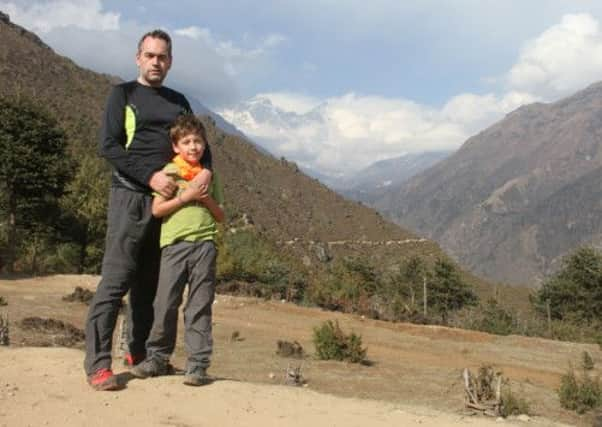Researchers hit heights to help save hospital patients’ lives


The isolated foothills of Everest aren’t, it’s fair to say, usually cited as an ideal spot to conduct medical experiments. But for a 200-strong team of doctors, scientists and willing volunteers, eager to scale new heights of life-saving, the high altitude at Everest Base Camp meant it was an attractive (and hugely challenging) venue.
In the UK, one in five people will be treated in intensive care at some stage in their lives and of these 40 per cent will die. Part of the reason for low survival is a condition called hypoxia, which happens when blood-oxygen levels drop dangerously low and can lead to multiple organ failure.
Advertisement
Hide AdAdvertisement
Hide AdLow blood-oxygen also affects humans at very high altitude – like when climbing the world’s tallest mountains – and this is the method behind the madness of Xtreme Everest, the organisation behind the expedition. “The studies on Everest are trying to be translated into patients fighting for their lives in an intensive care unit,” says Dr John Goldstone, an intensive care consultant at The London Clinic, which has helped fund Xtreme Everest. “Whether or not you survive organ failure is really, we think, to do with whether you can tolerate very low oxygen levels in your cells, in the tissues and the major organs like the heart and the kidneys.”
Led by Dr Dan Martin, an anaesthesia and critical care consultant from UCL who is still working at base camp, this year’s study, Xtreme Everest 2, is a follow-up to an initial 2007 expedition.
The first project, which was a not-for-profit collaboration led by medics and scientists from UCL, University of Southampton and Duke University in the US, saw experienced climbers in the group also perform tests on themselves in the Everest ‘death zone’ above 8,000m, where there’s barely enough oxygen to support life. The mission obtained valuable data about how cells function at low oxygen levels, how blood is supplied when oxygen is low, and the changes in physiology when oxygen levels drop and over the last two months, further experiments including performance testing on exercise bikes; blood, saliva, hair, urine, nasal swab and spit collection; lung function and muscle and skin oxygenation measurement, and various ultrasound scans and heart ECG measurement.
The huge amount of equipment required to carry out these sophisticated tests posed a logistical challenge and 15 tonnes worth of paraphernalia was shipped to Nepal and transported to the laboratories by native Sherpas. The Sherpas’ contribution didn’t end there – they also underwent medical tests to try to establish how their bodies have adapted to living with such low oxygen levels.
Advertisement
Hide AdAdvertisement
Hide Ad“It’s incredible – quite sophisticated experiments are being performed in tents. They really are quite ingenious,” says Dr Martin, who along with the small group now left at Everest, are currently packing up their equipment and sending it and the collected data back to the UK, where the results will be assessed.
Children were also taken to Everest where they underwent non-invasive tests. One of them was nine-year-old Jack Major from London, who was treated in intensive care at Great Ormond Street Hospital as a baby, following an operation to remove a large part of his bowel.
“When the chance arose to give something back to medical science and experience a once-in-a-lifetime trip, we had to sign up,” says his father Lee. “Jack would probably not be alive today if it weren’t for the brilliant doctors at Great Ormond Street. He’s never looked back, and is now a healthy young boy.” Lee recalls how one morning Jack woke up and was sick, probably suffering from altitude sickness. The vomiting only stopped when the trekkers returned to lower ground a few days later.
“If that was the low, then the high was trekking some 40km through the stunning Khumbu Valley. We achieved ‘our Everest’ by reaching the laboratory run by a group of hard-working doctors at Namche Bazaar, a small settlement that lies 3,500m above sea level, three times the height of Ben Nevis,” he says.
Advertisement
Hide AdAdvertisement
Hide AdThere, Jack underwent a series of tests to measure his heart rate, blood flow and oxygen uptake.
“We’re just happy to have contributed in a small way to a study that could help critically ill children in intensive care in the future,” adds Lee.
For more information visit www.xtreme-everest.co.uk